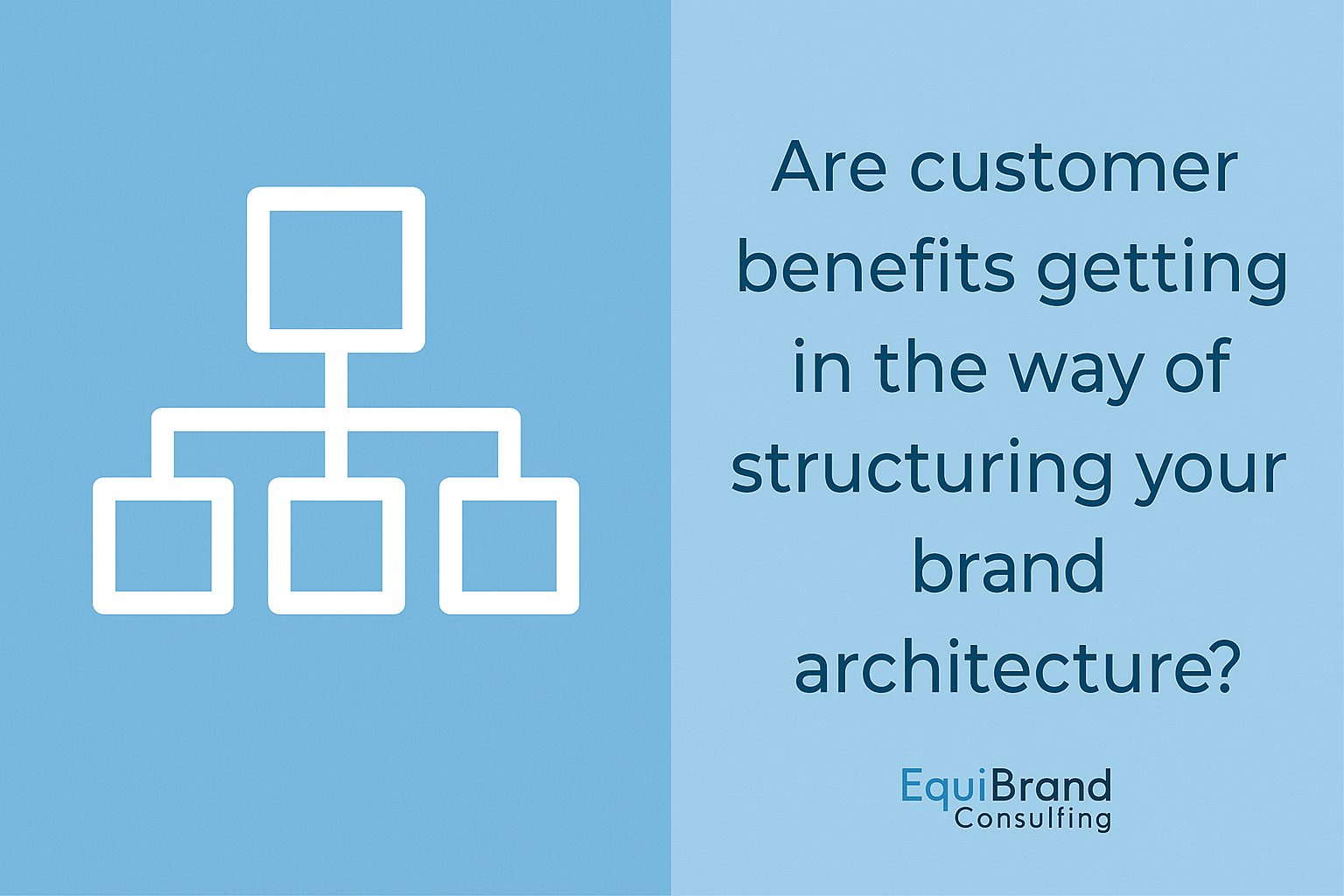A strategic approach to brand architecture and portfolio management
For companies with many products or services, strong brand architecture isn't optional— This guide introduces a customer-first way to manage your brand portfolio, including:
-
Clear category structure
-
Simple and benefit-led messaging
-
Scalable naming conventions
The result: a product hierarchy that improves clarity, speeds decisions, and aligns with how customers actually buy.
Why This Matters
Companies invest heavily in naming, messaging, and brand positioning around customer benefits— because these elements influence preference. But when the overall structure of offerings isn't clear, confusion grows.
Customers don't start by asking, "Why is this valuable?"
They start with: "What is this?"
-
Benefits persuade.
-
Categories organize.
If the portfolio is built around benefits instead of clear product groupings, customers often feel lost. They may not understand what's being sold, how products relate, or how to compare choices.
Where This Problem Shows Up
Poor architecture affects more than strategy documents—it impacts everyday execution:
-
Confusing website navigation
-
Marketing that lacks coherence
-
Sales reps spending time explaining basics
This reduces clarity, confidence, and ultimately, conversion.
A Simple Example: The Beverage Aisle
Think about how shoppers make decisions at a grocery store:
-
Category – What type of product is it?
-
Soda, sports drink, wine
-
-
Benefit – Why choose it?
-
Refreshment, energy, sociability
-
-
Product Name – Which exact item?
-
Coca-Cola Classic, Gatorade Zero
-
Customers don't shop by saying, "I need refreshment."
They go to the soda aisle first—then compare options.
Structure comes first. Benefits help decide within the structure.
Applying the Framework to Medical Devices and Related Services
Consider a company selling diagnostics, monitoring tools, and surgical devices. Internally, they might organize around benefits like:
-
Empowering clinicians
-
Improving patient safety
But buyers don't think this way. They want clear categories such as:
-
Imaging and diagnostic systems
-
Patient monitoring tools
-
Surgical instruments and robotics
-
Clinical software and services
Once the category is clear, benefit messaging can guide selection.
The Three-Tier Portfolio Framework
A strong portfolio follows three simple layers:
1. Category (Foundation)
Question: What kind of product is this?
Examples:
-
Soda, sports drink
-
Imaging systems, surgical robotics
2. Benefit (Differentiation)
Question: Why choose this one?
Examples:
-
Refreshing, energizing
-
Faster workflows, greater precision
3. Name (Execution)
Question: Which specific product?
Examples:
-
Coca-Cola Classic
-
NeuroView Pro
How Strong Brand Architecture Creates Value
When structure is clear and scalable, companies benefit from:
-
Faster customer understanding
-
Stronger naming systems
-
Better alignment across teams
-
Increased brand equity
This is more than a marketing task—it improves the entire go-to-market engine.
Why Organizations Get This Wrong
Common barriers include:
-
A focus on emotional storytelling over clarity
-
Internal silos based on capabilities, not customer logic
-
Naming creativity overshadowing customer usability
Without structure, messaging becomes fragmented and confusing.
What This Looks Like in Practice
At EquiBrand, we use a step-by-step process:
-
Customer insight: How do buyers group and compare offerings?
-
Structure mapping: Which categories reflect how they think?
-
Benefit positioning: What matters most within each category?
-
Naming system: How do we ensure clarity and consistency?
-
Governance: What rules support long-term growth?
Conclusion
In crowded markets, benefits matter—but structure comes first.
Customers want to:
-
Classify
-
Evaluate
-
Decide
By defining clear categories, layering benefit messaging, and applying simple naming rules, you create a system that mirrors how customers think.
At EquiBrand, we help companies build brand architectures that scale and make buying easier.
Looking for expert help with your brand architecture or portfolio structure?
At EquiBrand Consulting, we design customer-first brand portfolios that are clear, navigable, and built to scale. As a leading brand architecture consulting firm, we help companies grow from the outside in—reframing offerings, redefining categories, and applying upstream marketing tools to unlock growth.
Explore these free resources:
-
Build and Extend the Brand – A Guide to Upstream Marketing – Learn how brand architecture, naming, and portfolio strategy can enhance clarity, improve navigation, and support future growth.
[Download the free guide here.]Chapter 5 of our book, Upstream Marketing – See how companies build stronger, more scalable brands by aligning structure and messaging around customer needs.
[Access your free chapter here.]
Access these resources today and start building a brand architecture that's customer-first, clear, and built to scale.




















Follow EquiBrand